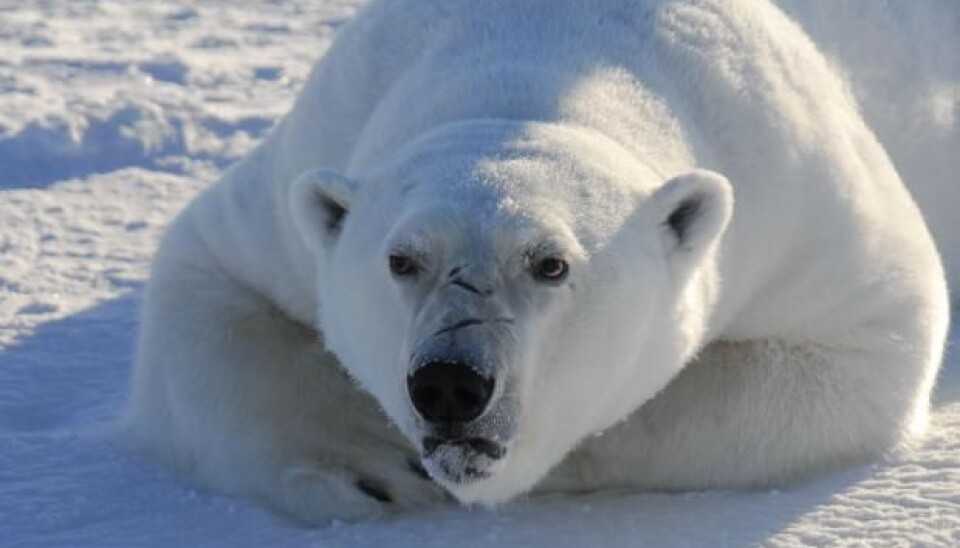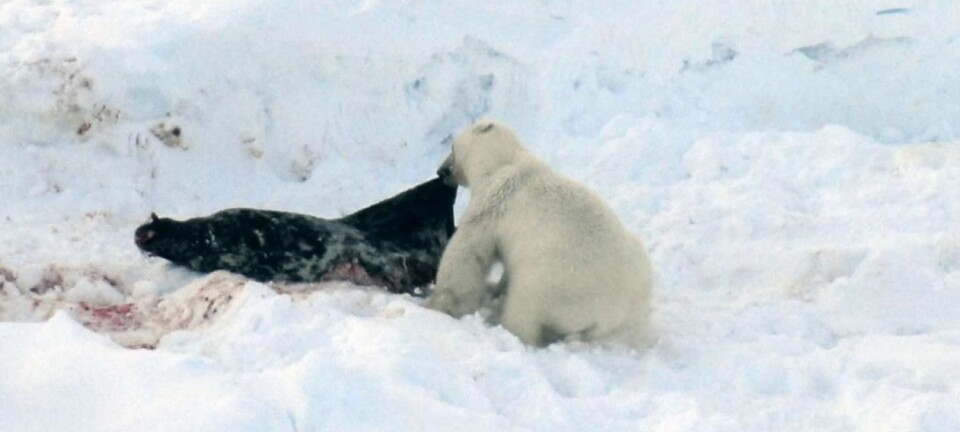
Chemical pollution is causing brain damage in polar bears
Toxic chemicals end up in the Arctic where they cause brain damage in polar bears. They could even affect humans, scientists warn.
The polar bears in the Arctic have more than just climate change to worry about these days. A new study shows that a number of man-made chemicals end up in the Arctic food chain where they mess with the polar bears' brains.
The new study, a collaboration between scientists from Aarhus University and the University of Copenhagen, along with colleagues in Canada and the United States, demonstrates how perfluorinated compounds, which have been used to treat industrial and commercial products for decades, disturb different signal molecules and enzymes in the bears' brains.
This may ultimately impact on the polar bears' behaviour, hormonal balance, and their ability to survive in an already hostile environment.
The Arctic is also inhabited by people who are exposed to precisely the same toxic chemicals as the polar bears.
"The amount of these compounds has been increasing in the Arctic in recent years. We should therefore also be aware of the effects they have on the environment and the people who live there," says study lead author Kathrine Eggers Pedersen, a Ph.D. student at the Department of Pharmacy, University of Copenhagen. "Our research shows that perfluorinated compounds may have a significant effect on polar bears and humans who live from the same diet as polar bears."
The study has just been published in the journal Environmental Research.
Polar bear's brain under stress
The study shows that the number of enzymes and signal substances in the brain of a polar bear depends on the concentration of perfluorinated compounds the bears have assimilated through their food -- which primarily consists seals.
The scientists discovered this by examining brains of dead polar bears from East Greenland.
According to another scientist involved the study, associate professor Bjarne Styrishave from the Toxicology Laboratory of the Department of Pharmacy at the University of Copenhagen, it’s particularly concerning because the fall in signal substances and enzymes in the brain may get so bad that they affect the polar bears' nervous and hormonal systems.
"We don't know whether the disruption of enzymes and signal substances is enough to have an effect on the polar bears' senses and behaviour. The brain is plastic and may adapt itself and compensate for the damage to a certain extent," says Styrishave.
The problem is just that we don't know how far the polar bears' brains can be pushed before then nervous systems sustain damage, he says. "It's difficult to say whether we are a long way from the limit, or very close to it."
Brains should not be disturbed at all
According to Styrishave, the nervous and hormonal systems of the polar bears should -- ideally -- not be disturbed in any way.
The two systems control the bears' behaviour and are involved in everything from mating to searching for food.
The polar bears are dependent, among other things, on a good memory and sharp senses when navigating their surroundings.
The nervous system and the hormonal system also control the functions of all the animal's organs including the liver, kidneys, lungs, heart, muscles, and genitals.
"It’s the fundamental processes vital to being a bear that can potentially be disturbed by the substances," says Styrishave.
Close to documenting correlation
Eva Cecilie Bonefeld-Jørgensen is a professor of toxicology and head of the Centre for Arctic Health at Aarhus University.
Although she did not take part in the new study she has previously performed studies that demonstrated how perfluorinated chemicals are associated with an increased risk of developing breast cancer among Greenland women.
Bonefeld-Jørgensen believes, however, that caution should be exercised before we conclude that the perfluorinated compound also affect human brains.
"Polar bears have much higher concentrations of these substances in their brains than humans. So we can't draw any conclusions about humans before we have carried out similar studies on human brains,” says Bonefeld-Jørgensen. “Nevertheless, it’s important that we focus on the substances so they don't reach the same high concentrations in humans as they do in polar bears.”
---------------
Read the original story in Danish on Videnskab.dk
Translated by: Hugh Matthews









